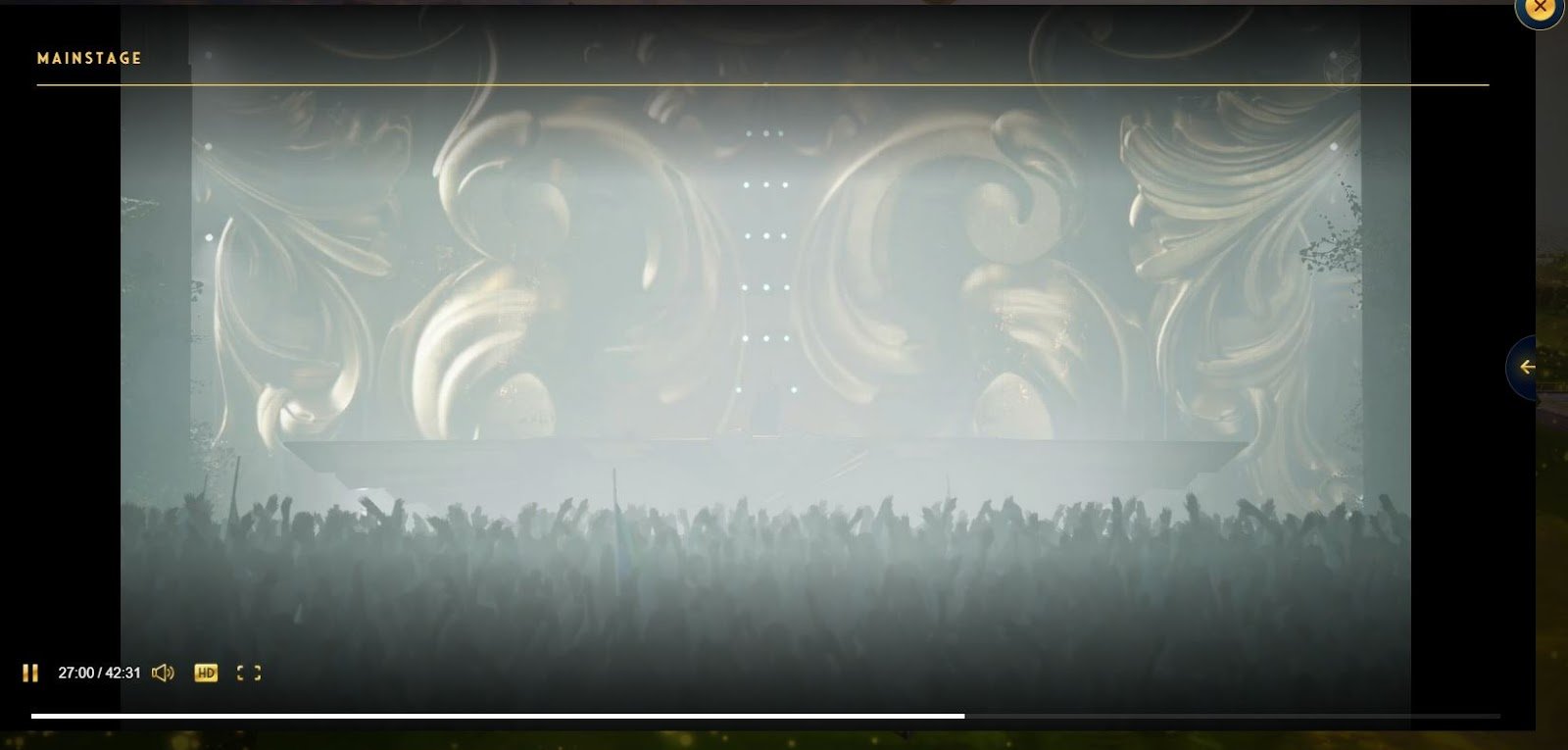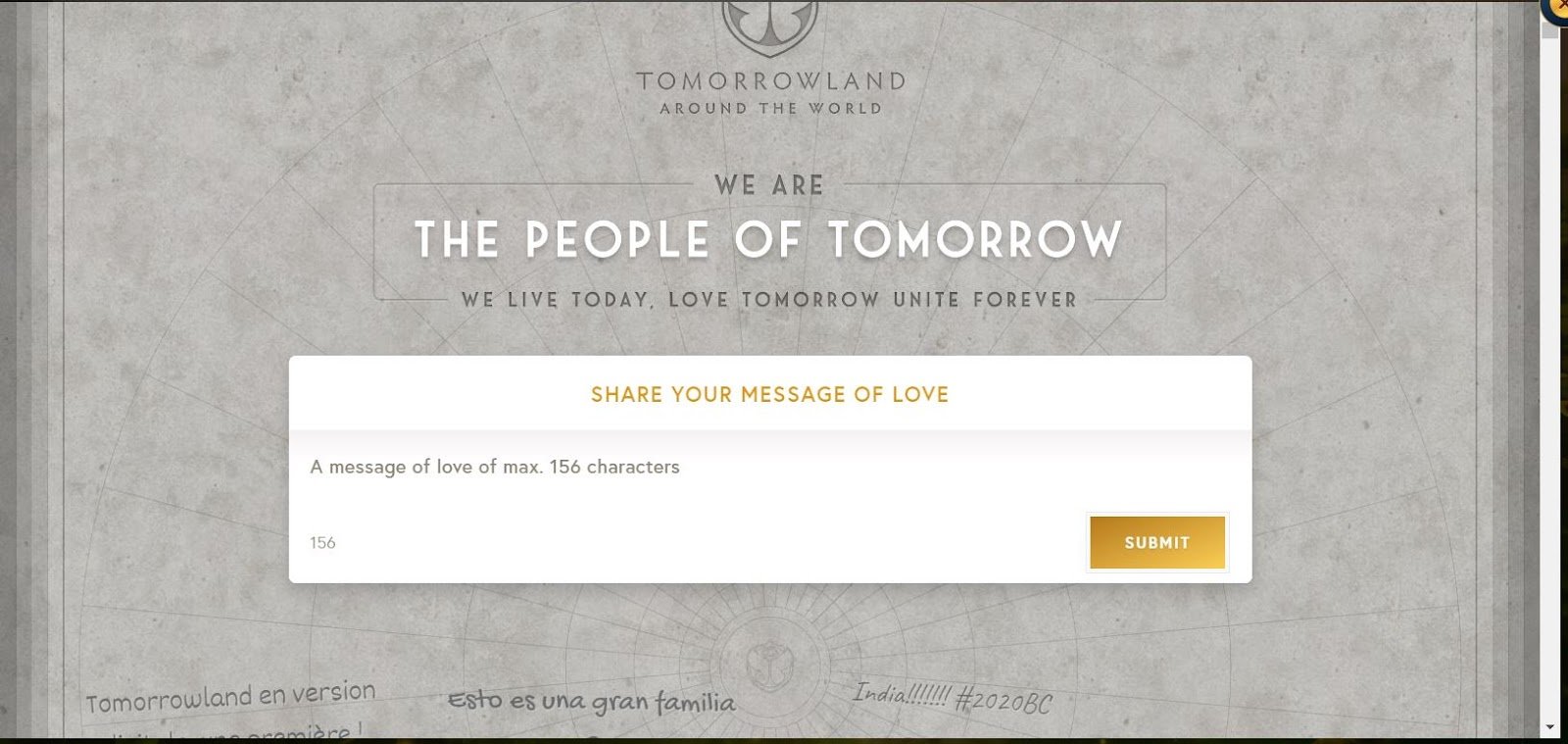TOMORROWLAND: A 2D VIDEO STREAMING FESTIVAL
TOMORROWLAND: A 2D VIDEO STREAMING FESTIVAL THAT ATTRACTED OVER 1 MILLION VIEWERS
Tomorrowland is one of the biggest electronic dance music (EDM) festivals that takes place each year, bringing 400 000 attendees from around the world to gather in Boom, Belgium for a two weekend extravaganza that has in the past, sold out in minutes.
This year, Tomorrowland went digital on July 25 and 26, beckoning in 1 million viewers to watch the online event that was constructed with the Unreal Engine 3D game engine. With approximately 200 staff working for 3 months, 60 artists were recorded to join the lineup across 8 stages.
With huge hype for this event, and excitement around it being a virtual and interactive entertainment experience, let’s revisit Tomorrowland with an in-depth run through of the festival beyond the lingo and in the context of the tools that were used, the fans who watched, and finally, what Tomorrowland signifies in the context of the live music industry (skip to end to cut to the chase to learn about virtual concerts and where everything is going in this 5 min video).
Login Experience
The login experience was seamless. After purchasing a ticket, I was able to login to the festival grounds with a username and password on Tomorrowland’s website. Upon entering the unique password protected web page, a directional screen appeared to provide me with information about how to navigate the page. This was a great start to the festival, with little to no barrier to entry, accessible on Mac/PC and mobile phone via the web — although not accessible via virtual reality.
With a low poly environment (simple visual design) the graphics also contributed to the experience being accessible to attendees who may not have a high powered gaming setup.
Festival Grounds and Stages
With Boom, Belgium out of the picture under COVID-19, Tomorrowland took place in the digital world of Pāpiliōnem. The island, experience and artist recordings took 3 months to develop with Tomorrowland’s staff and additional developers, bringing in approximately 200 people total to work on the project.
The island boasted 8 different stages, with the largest stage being the Mainstage, as pictured below from the birdseye vantage point provided to view the island. The design was simple, similar to the likes of Civilization 3, a turn-based strategy video game series released in 2001.
The stages themselves have 10 times more polygons (higher resolution) compared to a modern computer game, and these visuals could be enjoyed in the video recordings available at each stage.
Numbers such as outdoor stages having 16 square kilometres of photo realistic landscaping, 32 000 trees and plants, and 280 000 dummy fans are impressive, but it’s like taking a picture of Queen performing for Live Aid in front of 72,000 people in Wembley Stadium and saying that it’s 180,000 Square metres and that the (imaginary) forest around it had 25 000 shrubs, 50 flowers and one type of rare palm tree. Unfortunately I didn’t notice the plants during the festival, or the scale of the venues as mentioned above. As an attendee I would have loved for the focus to be on developing the experience. I hope that the dedication to environment design and scale means that we will see an actually immersive and interactive Tomorrowland in the future.
To enter the stage, I clicked on it and was brought into a YouTube like page with embedded videos. I could select which performance to watch and switch between or skip through the recordings as desired.
For each of the digitally constructed 3D stages, a number of virtual cameras were used to enable the director to choose up to 38 various camera angles when editing the clips.
Virtual cameras are software rather than hardware. They are camera tools within the game engine that capture 3D animation and scenery from different points of view (POVs). They behave similarly to real-world cameras, but record digital footage. For example, in video games these virtual cameras are used to show action at the best possible angle, and often for cut-scenes when a third person view is used as a part of the narrative.
These virtual cameras were used without restraint during the Tomorrowland Festival to show the elaborate stage designs, lighting effects, and dummy audience, with continuous cinematic camera movements during the 45 minute to hour long performances.
Performance
In real life, 6 4K Ultra HD cameras were used to capture footage of the artists in green screen studios in Belgium, the USA, Brazil and Australia. This footage was then implemented into the digital 3D environment of Tomorrowland. More than 300TB of raw footage was collected, with tens of different render engines working 24/7 to process all the data into the final video output.
The final results were pre-recorded 2D videos of the performing artists with special effects built in a 3D engine that contributed to the final appearance of the 2D experience. The event was hosted on a website, where fans could watch the pre-recorded and pre-rendered video of famous DJs.
There is a lot of talk around the use of powerful game engines in online performances, but these types of performances aren’t using the real-time effects that makes the Unreal Engine a game changing tool for interactive and live entertainment. Tomorrowland’s lighting effects and stages were absolutely stunning, but as a passive 2D spectator experience the real magic of a festival was lost.
Agency
There was no agency other than what is available on a typical web page. For example, the ability to select which pre-recorded video to watch as you would do on YouTube, or which stage or web page to enter depending on where the artist videos that you want to see are located.
The “chat” or “speak with other fans” element of the festival was as simple as leaving a comment integration where fans could write their message to the festival. Curated messages would then become visible on the web page in stylized fonts.
The ability to “explore the island with friends” means you can all sit in front of the computer or phone and watch the videos together, or click on the embedded curated Instagram social media feed within the Tomorrowland web page.
The “game” element of the festival was a quiz with an interactive web page. Locating the shining lights in the library would trigger multiple choice questions to appear.
Brand Experiences
The brand pages were similar to the stage experiences, where I could click on the brand area on the map and a web page would open with information about the sponsor. Pepsi featured “The Next Sound of Tomorrow”, and Absolute Vodka shared videos and recipes for mixed drinks.
Brands play a huge role in funding innovation and bringing experiences to fans. When their contributions become a collaboration, this gives room for the development of an experience that feel a lot more organic than giant pop-up pages.
I look forward to these types of integrations being further developed for future events. Advertising, like concerts, should advance with the tools available to shape the experience.
The Line Up
The event brought in more than 60 of the world’s most prominent EDM artists. This is fantastic for the fans of Tomorrowland who travel to Belgium each year to see the biggest names in EDM. It also makes sense in the short term for companies that are building a solution that will bring in the biggest numbers with the lowest barrier to entry.
What it Means for the Music Industry
These online video experiences that use powerful gaming engines are a great step forward for online spectator videos with special effects. Tomorrowland is also a big milestone for online events as it outsold its IRL counterpart.
However, beyond the PR, it’s clear that this festival is still a long way from something that will genuinely create a meaningful and exciting experience.
It’s great that these top 60 DJs can share their videos with stunning visual effects, but what does this mean for breaking artists who have had their live shows cancelled? Or the venues that have had to close their doors and lay off staff? What about the rest of the $9 billion that the live industry used to be able to generate from ticket sales and deals?
Events that are actually live streamed with volumetric capture, in-browser 3D experiences, faster bandwidth/5G, and cross platform compatibility, including VR, are not far away, and it’s the smaller events that are taking place, focusing on creating great audience experiences, persistent worlds, and an ecosystem that supports artists that are building a sustainable model for live and virtual concerts:
This talk by Epic Games CEO Tim Sweeney provides excellent insights into how this ecosystem and its economics will work:











